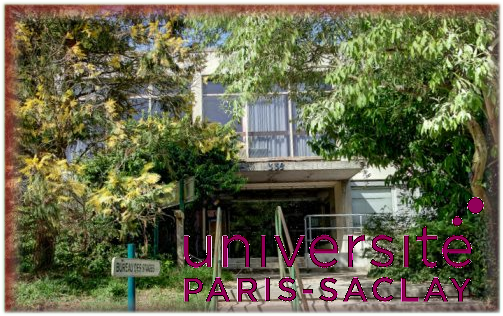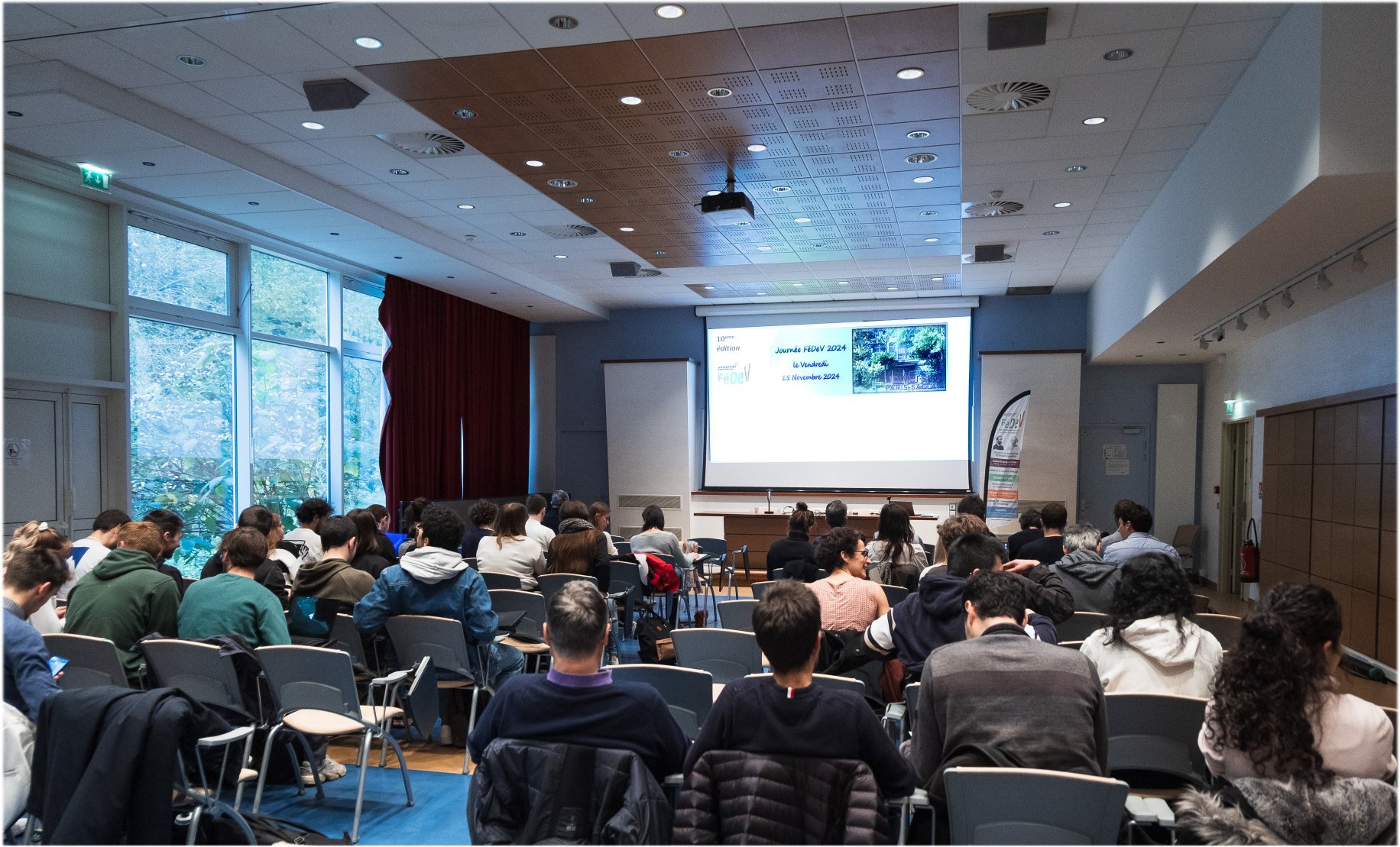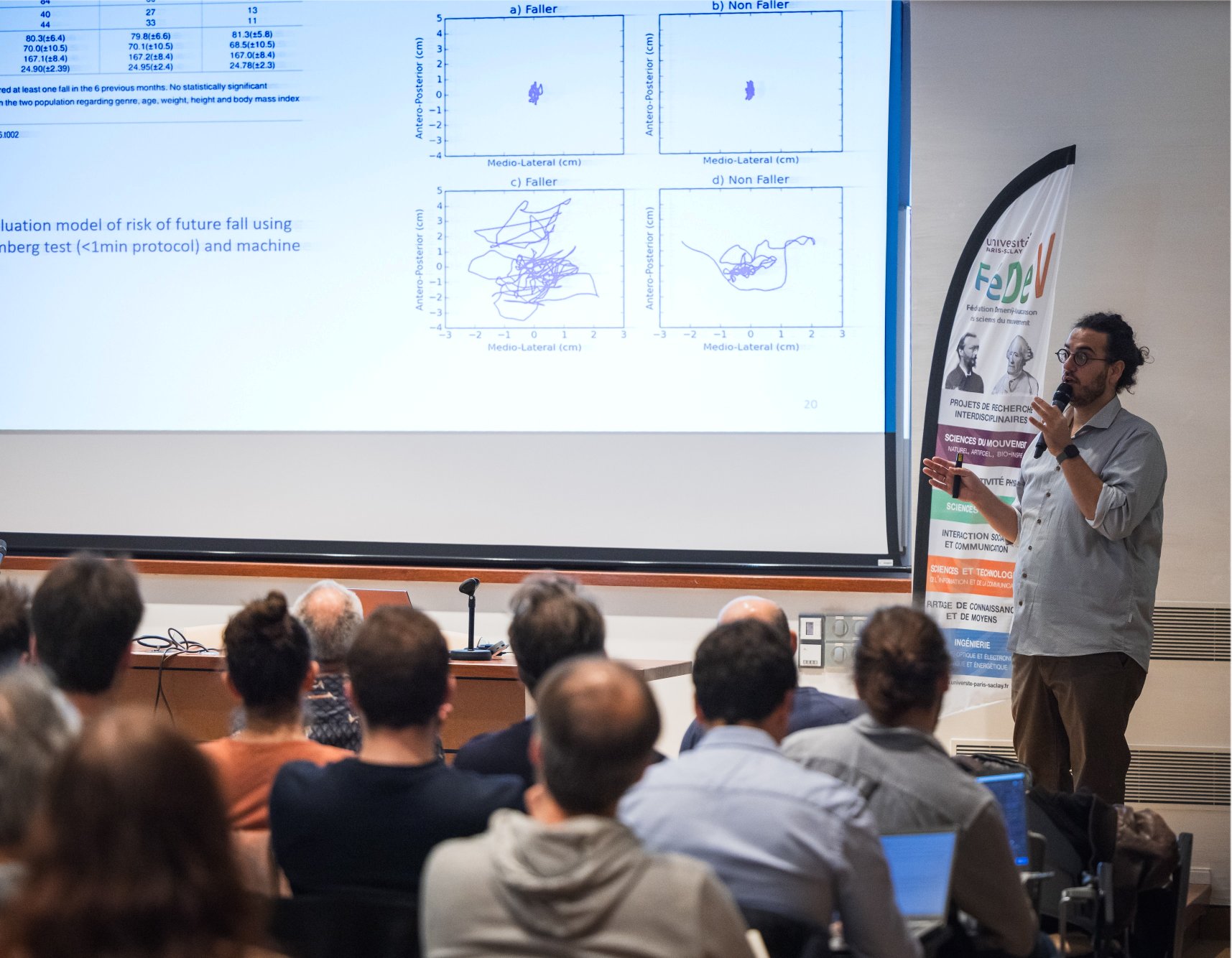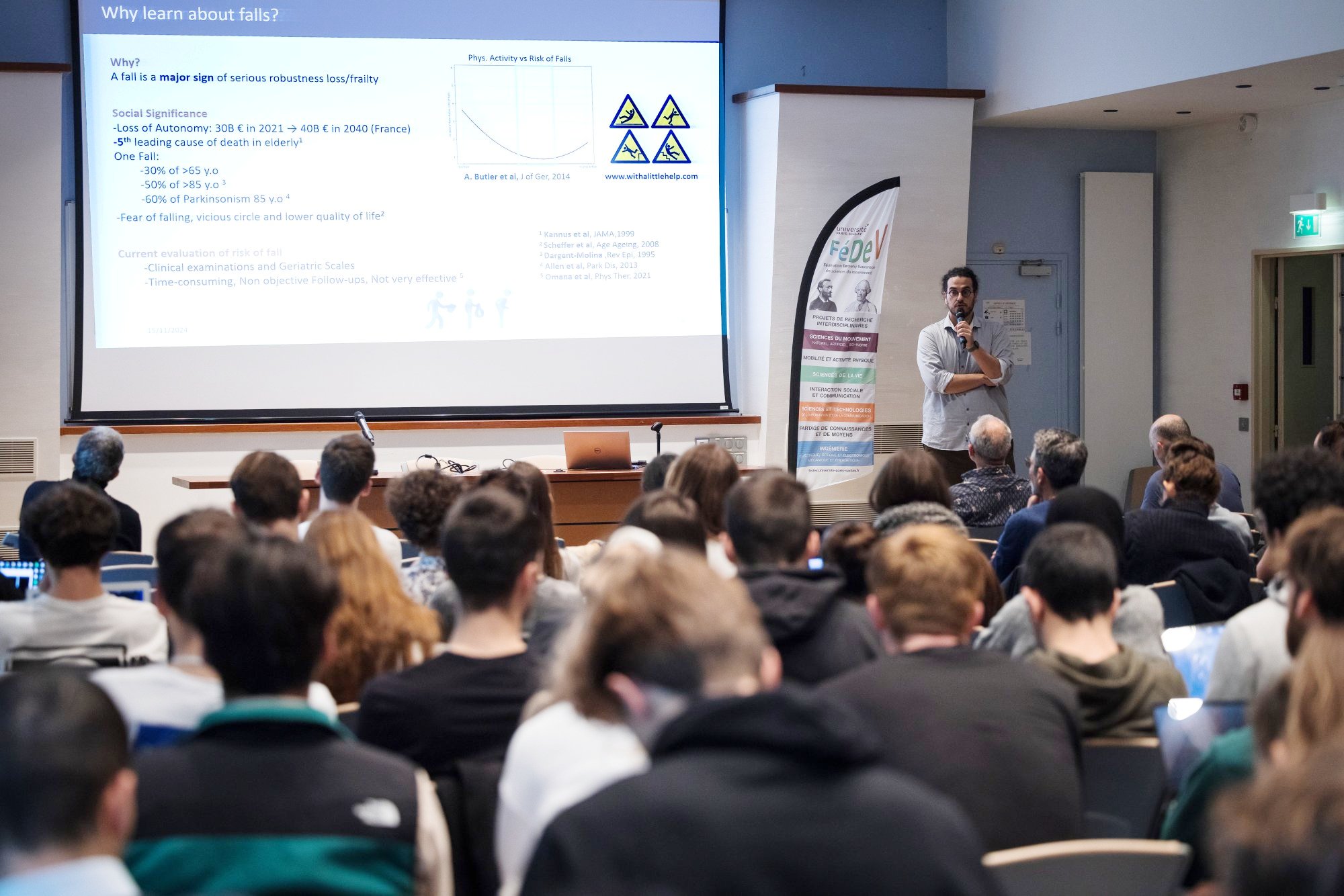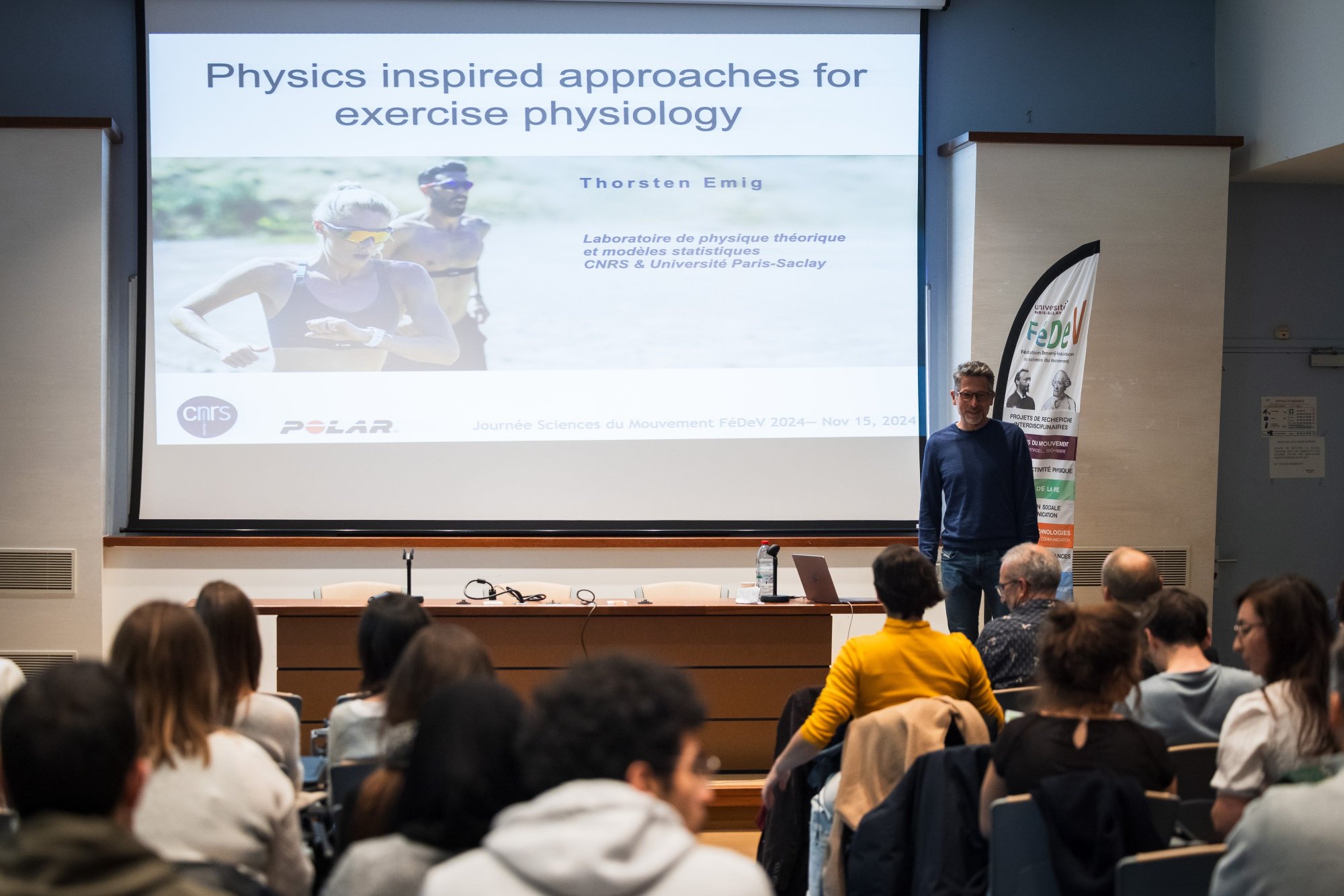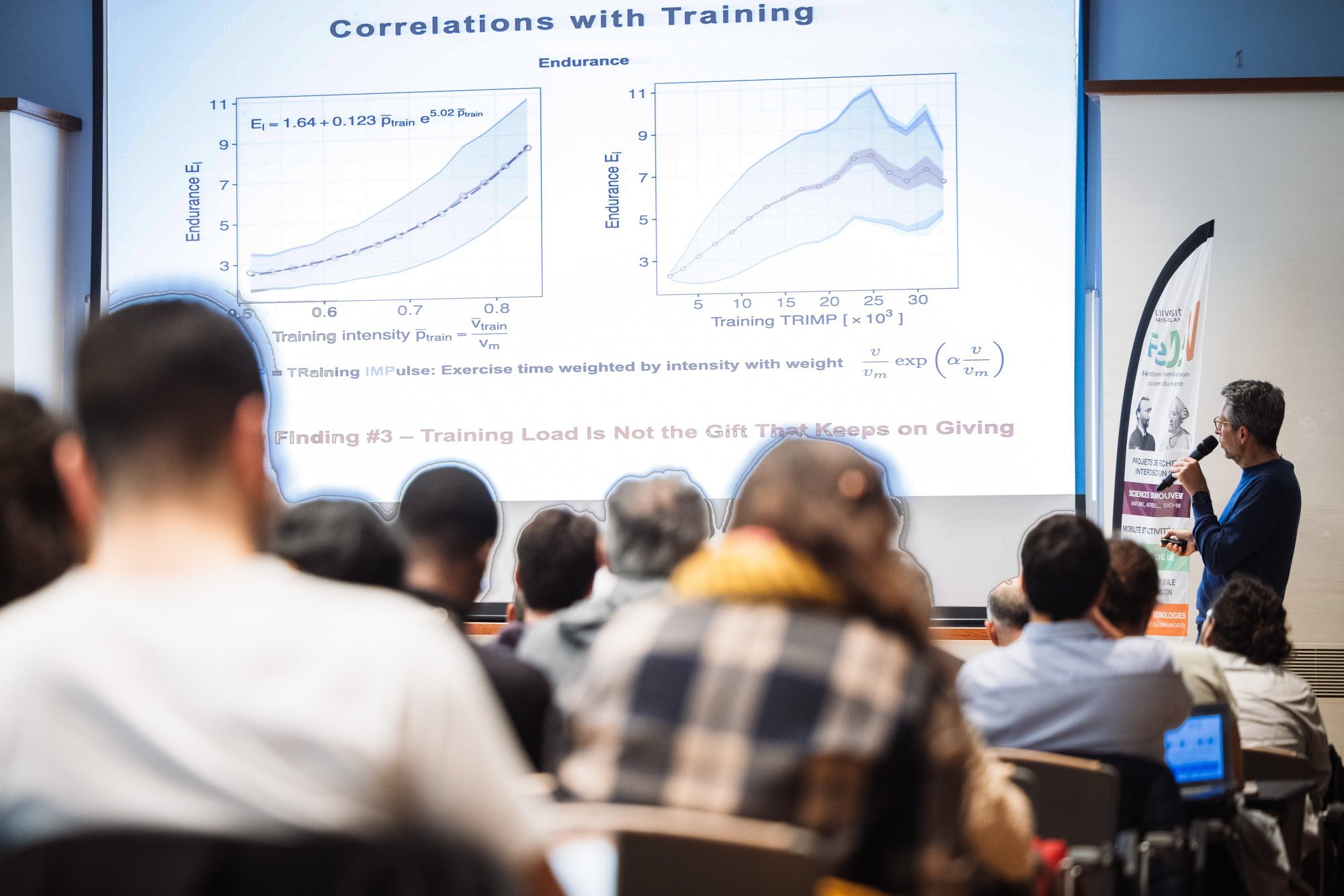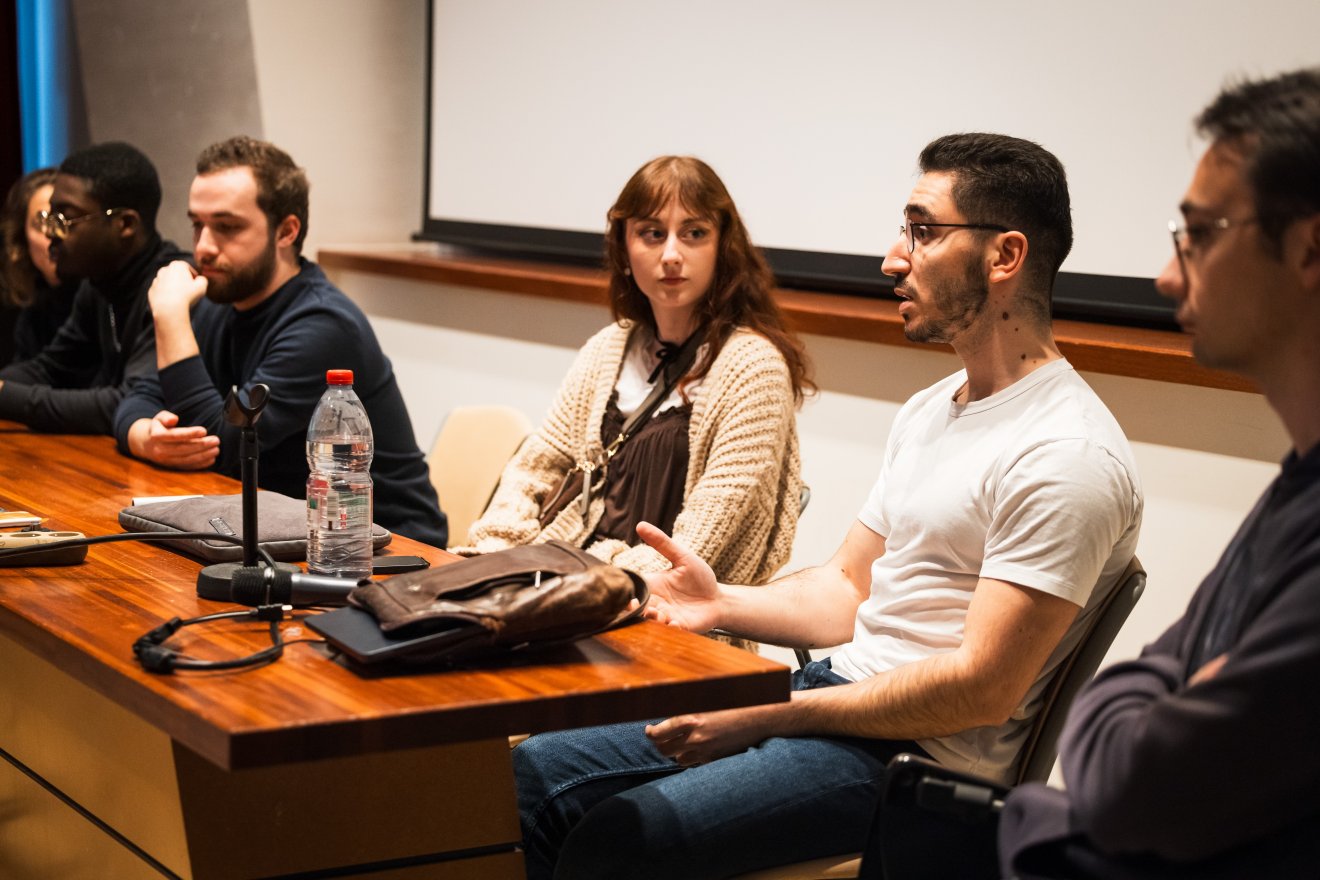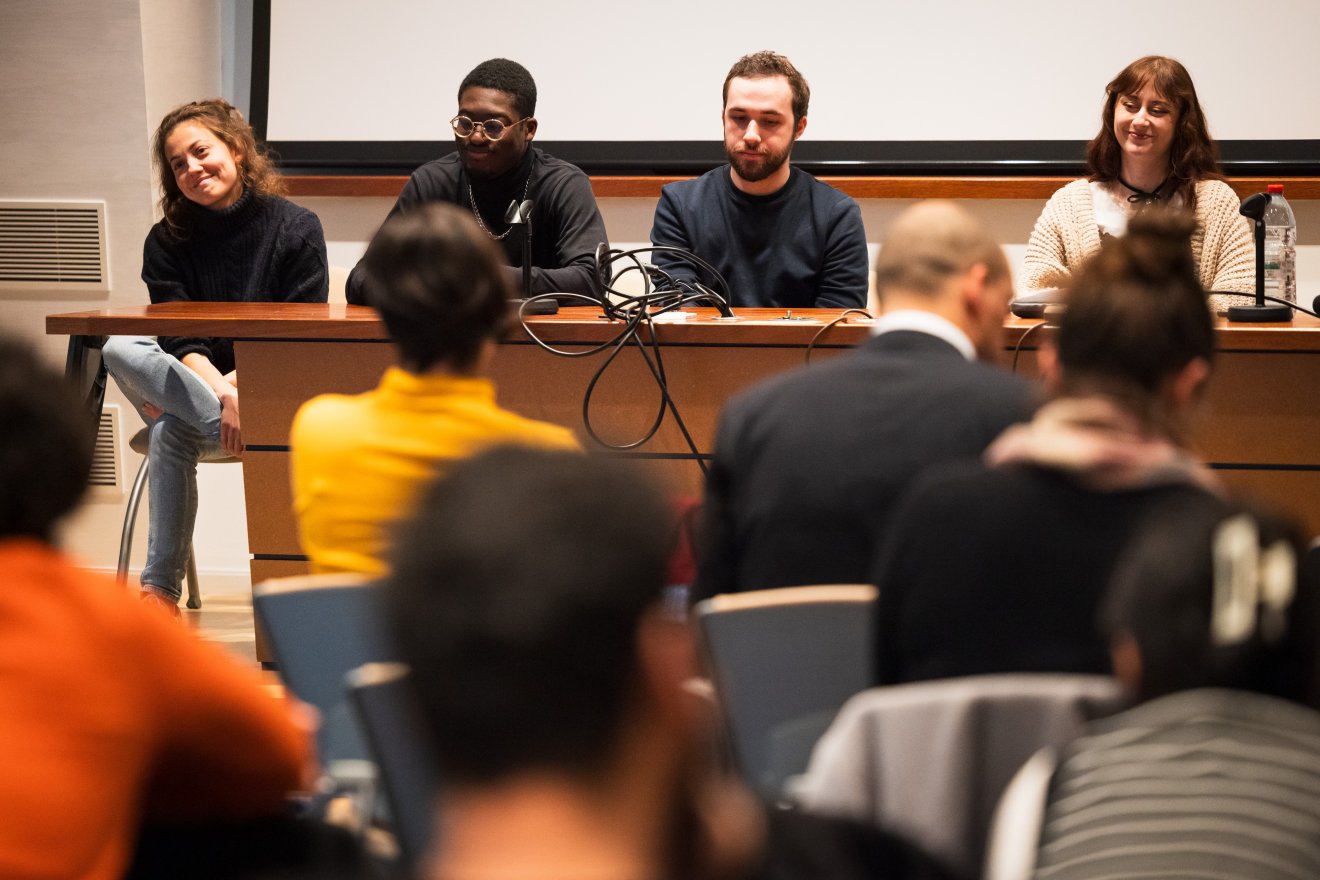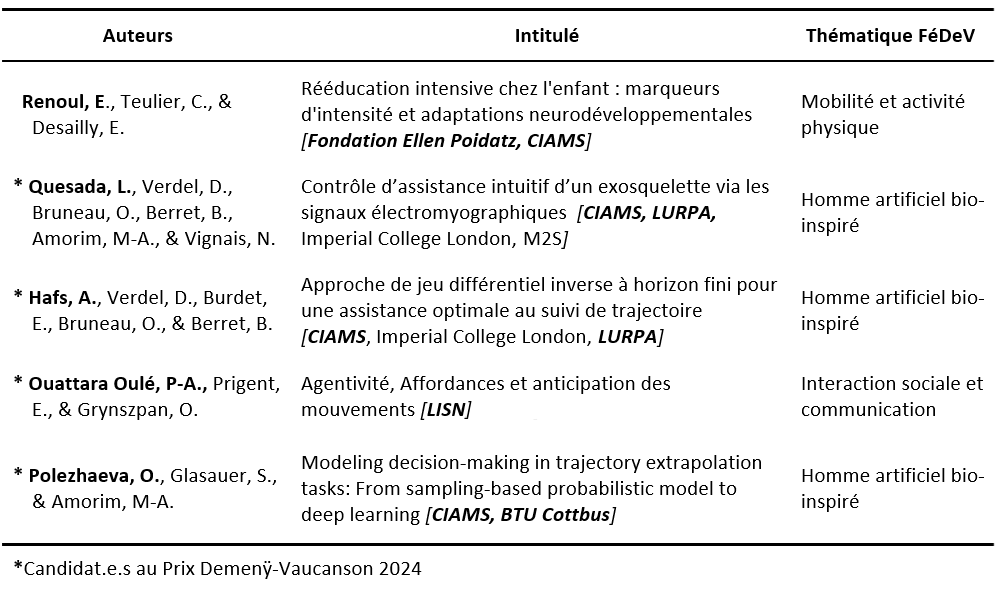Journée FéDeV 2024 : Vendredi 15 Novembre 2024
La journée s’est tenue au Bâtiment des Colloques (bât 338), Université Paris-Saclay, Campus d’Orsay
PROGRAMME
8h30 : Arrivée Organisateurs
8h45 : Accueil public / Pause café
9h15 : Discours d’ouverture de la Journée FéDeV 2024
9h30-10h30 : Conférence plénière
« Posturography and Machine Learning: Is it enough for predicting future falls? »
by Ioannis BARGIOTAS, Holder of the Junior Professor Chair in Artificial intelligence for control and optimization using real-time biofeedback for enhanced physical exercise, INRIA Paris-Saclay
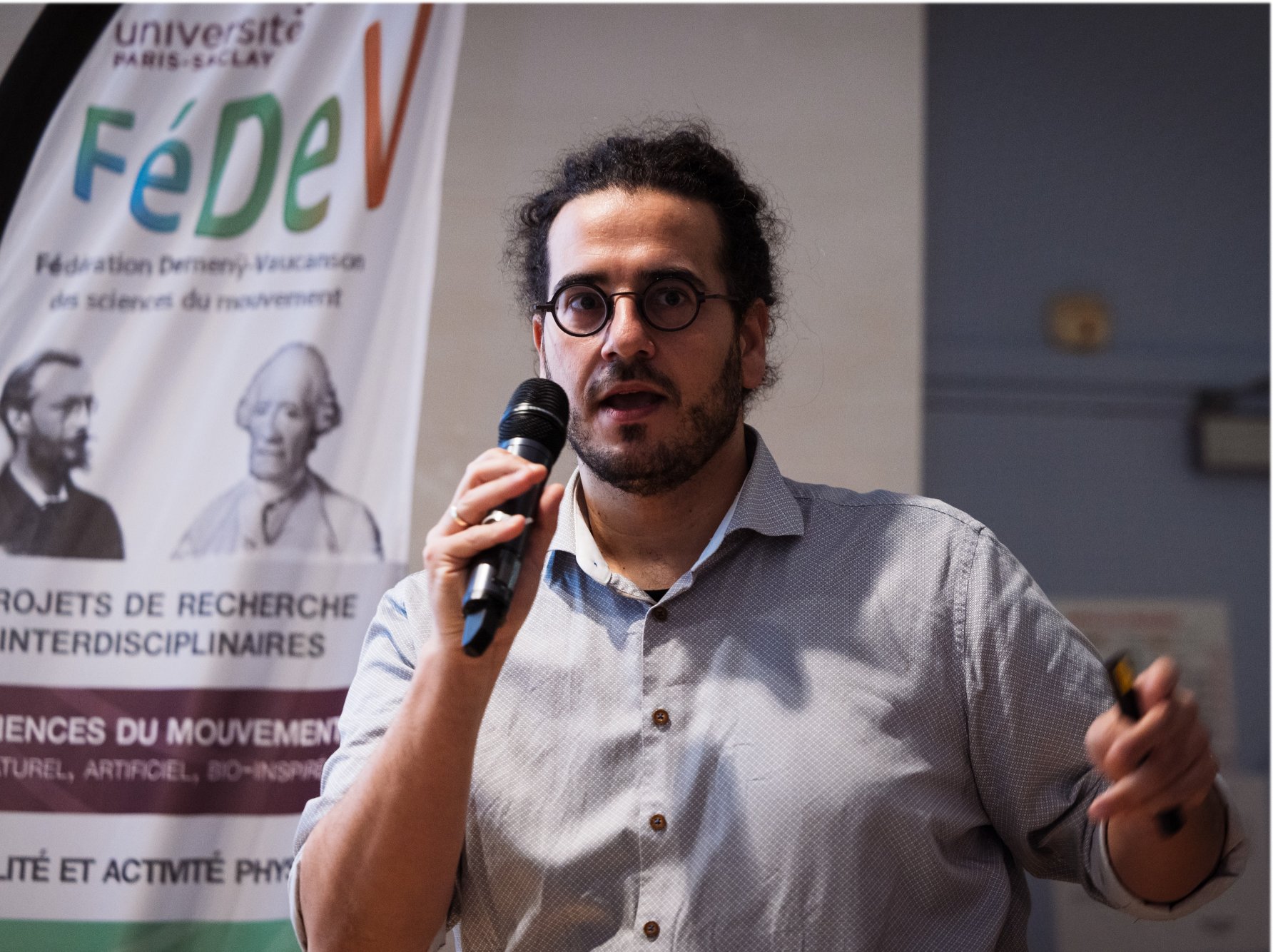 Abstract: Supporting frail-prone groups such as the elderly or those suffering from neurodegenerative diseases is crucial for their social, physical, and autonomous well-being. Once individuals enter the pre-frail stage, they are already likely to experience falls whose consequences may accelerate the deterioration of their quality of life (injuries, fear of falling, reduction of physical activity). Early detection of frailty and risk of fall assessments are essential to attenuate these effects. This presentation briefly discusses current advancements and perspectives that may arise from the posturographic research, combined with appropriate Machine Learning analytics, along with our efforts to address this challenge.
Abstract: Supporting frail-prone groups such as the elderly or those suffering from neurodegenerative diseases is crucial for their social, physical, and autonomous well-being. Once individuals enter the pre-frail stage, they are already likely to experience falls whose consequences may accelerate the deterioration of their quality of life (injuries, fear of falling, reduction of physical activity). Early detection of frailty and risk of fall assessments are essential to attenuate these effects. This presentation briefly discusses current advancements and perspectives that may arise from the posturographic research, combined with appropriate Machine Learning analytics, along with our efforts to address this challenge.
10h30-11h00 : Pause café
11h00-12h00 : Conférence plénière
« Physics inspired approaches for exercise physiology »
by Thorsten EMIG, CNRS Research Director, LPTMS, Université Paris-Saclay
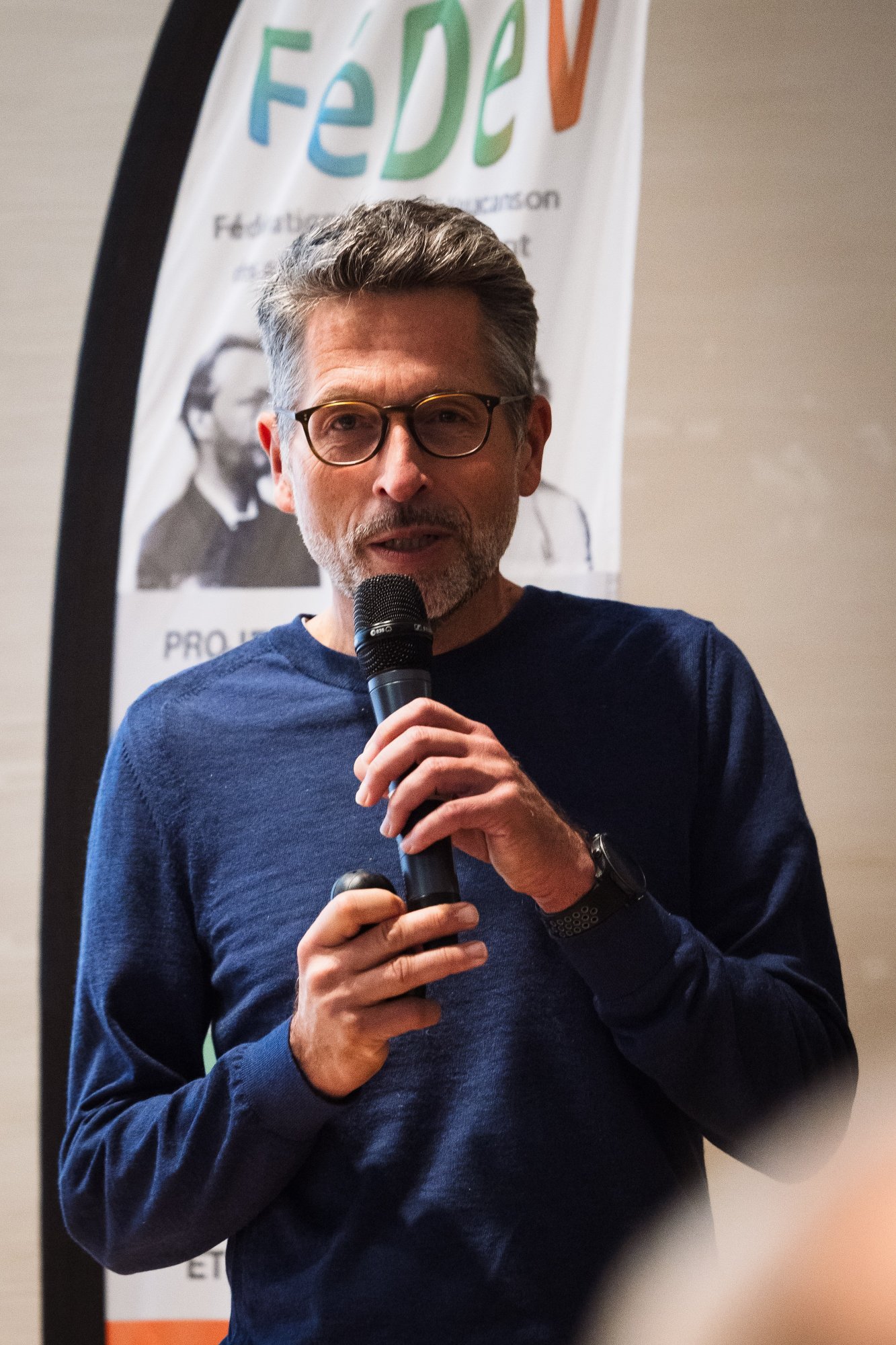 Abstract: Laboratory performance tests provide the gold standard for running performance but often do not reflect real world conditions, and they are limited to a relatively small number of athletes. In my presentation, I shall demonstrate that large datasets, obtained from wearable exercise trackers, together with mathematical models and methods from statistical physics allow for a better understanding of the complex interplay between training and performance. One of our data sets contains running activities of ≈ 14,000 individuals, ≈ 1.6 million exercise sessions, and a total collaborative distance of ≈ 20 million km run. Correlations between performance indices and training volume and intensity are quantified, pointing to an optimal training [1].
Abstract: Laboratory performance tests provide the gold standard for running performance but often do not reflect real world conditions, and they are limited to a relatively small number of athletes. In my presentation, I shall demonstrate that large datasets, obtained from wearable exercise trackers, together with mathematical models and methods from statistical physics allow for a better understanding of the complex interplay between training and performance. One of our data sets contains running activities of ≈ 14,000 individuals, ≈ 1.6 million exercise sessions, and a total collaborative distance of ≈ 20 million km run. Correlations between performance indices and training volume and intensity are quantified, pointing to an optimal training [1].
I shall also show that our model for running performance describes world records since 1918 for men and since 1984 for women with high accuracy. The physiological parameters extracted from world records for each year are interpreted in terms of historical changes in training approaches and corresponding physiological adaptations, technological progress, social effects, and also the use of performance enhancing drugs [2].
Finally, I shall present a dynamical approach to analyze the time evolution of beat-to-beat correlations of the human heartbeat during running across various training and racing events under real-world conditions. In particular, I shall introduce dynamical fluctuation analysis and dynamical partial auto-correlation functions, which are able to detect real-time changes in the scaling and correlations of the RRis as functions of the scale and the lag. We relate these changes to the exercise intensity quantified by the heart rate (HR) [3]
[1] T. Emig, J. Peltonen, Human running performance from real-world big data, Nature Communications 11, 4936 (2020).
[2] T. Emig, G. Adam, Evolution of World Running Record Performances for Men and Women: Physiological Characteristics, Frontiers in Physiology 15:1372092 (2024).
[3] M. Molkkari, G. Angelotti, T. Emig, et al. Dynamical heart beat correlations during running. Sci Rep 10, 13627 (2020).
12h00-12h15 : Poster Booster (1 min oral presentation per poster, no slide)
12h15-13h45 : Déjeuner // Posters
13h45-14h45 : 3 Communications orales de doctorant.e.s FéDeV
14h45-15h15 : Pause café // Posters
15h15-16h : 2 Communications orales de doctorant.e.s FéDeV
16h-16h30 : Table ronde animée par tous les doctorant.e.s ayant donné une communication orale ou présenté un Poster, sur le thème “ Jeunes Chercheurs en Sciences du Mouvement à Paris-Saclay: quelles pistes pour l’animation ? l’organisation ? la structure ?” (pendant ce temps : délibération du jury pour le Prix Demenÿ-Vaucanson 2024)
16h30 : Discours de clôture et remise du prix de la Journée FéDeV 2024
17h : Fin de la Journée
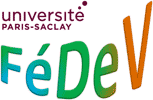
 Français
Français